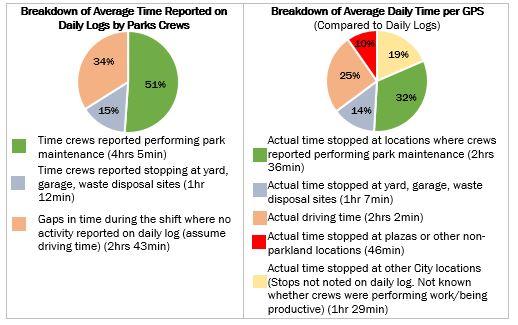An audit of the Toronto Parks Branch has revealed inconsistencies in the reported maintenance activities of city parks, highlighting gaps in supervision and technology use. Conducted by the Auditor General’s office, the review examined daily maintenance logs and GPS data from the Parks, Forestry and Recreation (PFR) Division, uncovering that reported locations and times often did not match GPS records.
The audit scrutinized the practices of city crews tasked with keeping Toronto’s parks clean and safe. In a sample of 85 daily logs, the audit found that 46% of reported work locations did not align with GPS data, and 87% of logs showed crews stopping at additional unreported sites. Moreover, in 86% of logs, crews were found to have stopped at non-park locations, such as retail establishments and eateries, sometimes exceeding allotted break times.
“The use of GPS tracking could significantly improve accountability and productivity,” said the report, noting that the city has yet to fully implement GPS monitoring on all Parks Branch vehicles. As of the audit, 32% of vehicles lacked GPS devices, limiting management’s ability to verify crew activities accurately.
The report recommends the full installation of GPS technology across all vehicles and calls for enhanced training to ensure accurate reporting in daily logs. It also emphasizes the need for regular supervisory reviews of logs in conjunction with GPS data to verify reported activities and address discrepancies.

The audit found that existing service level standards, updated in 2022, are not always met due to factors like weather and staffing challenges. For example, weekly litter collection and grass maintenance were not consistently achieved. The report calls for the development of key performance indicators to better measure adherence to these standards, enabling more data-driven decisions about maintenance.
The report includes nine recommendations aimed at improving oversight and operational efficiency, including the adoption of digital record-keeping tools and strengthened on-site supervision. “Implementing these recommendations will enhance the Parks Branch’s ability to maintain Toronto’s parks in line with public expectations,” the report concludes.
The Parks Branch’s response included plans to implement some recommendations, such as expanding the GPS program and transitioning to digital logs, though these changes may take time to roll out across all districts.
9 key recommendations from the audit
Expand GPS Monitoring: Equip all Parks Branch vehicles with GPS technology to enhance accountability and improve productivity tracking.
Clarify Break and Stop Guidelines: Reinforce clear guidelines for acceptable break times and legitimate reasons for stopping at non-park locations.
Enhance Log Review Procedures: Implement routine supervisory reviews of daily logs alongside GPS data to verify crew-reported activities and identify discrepancies.
Ensure Complete GPS Coverage: Collaborate with Fleet Services to install GPS devices on all vehicles, including those set for replacement, to allow comprehensive tracking.
Improve Training for Daily Log Completion: Provide additional training to ensure staff accurately and consistently complete daily logs, capturing all relevant details.
Strengthen On-Site Supervision: Develop clearer guidelines for Supervisors on how to conduct effective on-site monitoring, including regular, unannounced visits to work locations.
Modernize with Digital Tools: Transition to digital daily logs to streamline record-keeping, improve data accuracy, and support better decision-making through accessible, real-time data.
Update and Measure Service Standards: Periodically review and update service level standards, using key performance indicators to measure and ensure adherence to maintenance targets.
Develop Key Performance Indicators (KPIs): Establish KPIs to measure service level achievements and identify areas needing improvement to optimize operational efficiency.






